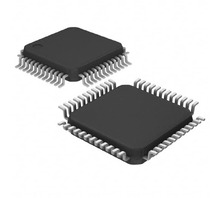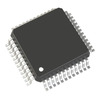Manufacturer Part Number
MPC9443AE
Manufacturer
nxp-semiconductors
Introduction
The MPC9443AE is a highly versatile clock/timing buffer designed for a variety of applications requiring signal distribution, division, and multiplexing.
Product Features and Performance
Fanout Buffer (Distribution), Divider, Multiplexer functionality
Supports 2:16 input to output ratio
LVCMOS, LVPECL input compatibility
Delivers LVCMOS output
Accommodates frequencies up to 350 MHz
Operates with a supply voltage range of 2.375V to 3.465V
Designed for surface mount technology
Can function within a wide temperature range from -40°C to 85°C
Product Advantages
High flexibility due to fanout, division, and multiplexing capabilities
Broad compatibility with LVCMOS and LVPECL inputs
Supports high frequency operations
Suitable for a variety of power supply requirements
Reliable performance in extreme temperature conditions
Key Technical Parameters
Type: Fanout Buffer, Divider, Multiplexer
Number of Circuits: 1
Ratio Input:Output: 2:16
Differential Input:Output: Yes/No
Frequency Max: 350 MHz
Voltage Supply: 2.375V ~ 3.465V
Operating Temperature: -40°C ~ 85°C
Package / Case: 48-LQFP
Supplier Device Package: 48-LQFP (7x7)
Quality and Safety Features
Due to the precise manufacturing and testing process followed by NXP Semiconductors, users can expect reliable and consistent performance.
Compatibility
The MPC9443AE is designed to be universally compatible with systems requiring LVCMOS and LVPECL input signals.
Application Areas
Telecommunications
Data Centers
Computing Systems
High-Speed Networking Equipment
Product Lifecycle
As this product is marked Obsolete, it is nearing the end of its life cycle. It's important to look for replacements or upgrades.
Several Key Reasons to Choose This Product
Versatile functionality facilitates diverse application use
High frequency operation suitable for modern technology requirements
Broad input compatibility enhances system integration
Reliable performance in a wide range of environmental conditions
Obsolescence status necessitates consideration for system future-proofing




 MPC9446IDT (Renesas Electronics Corporation)
MPC9446IDT (Renesas Electronics Corporation)